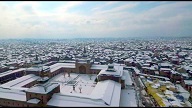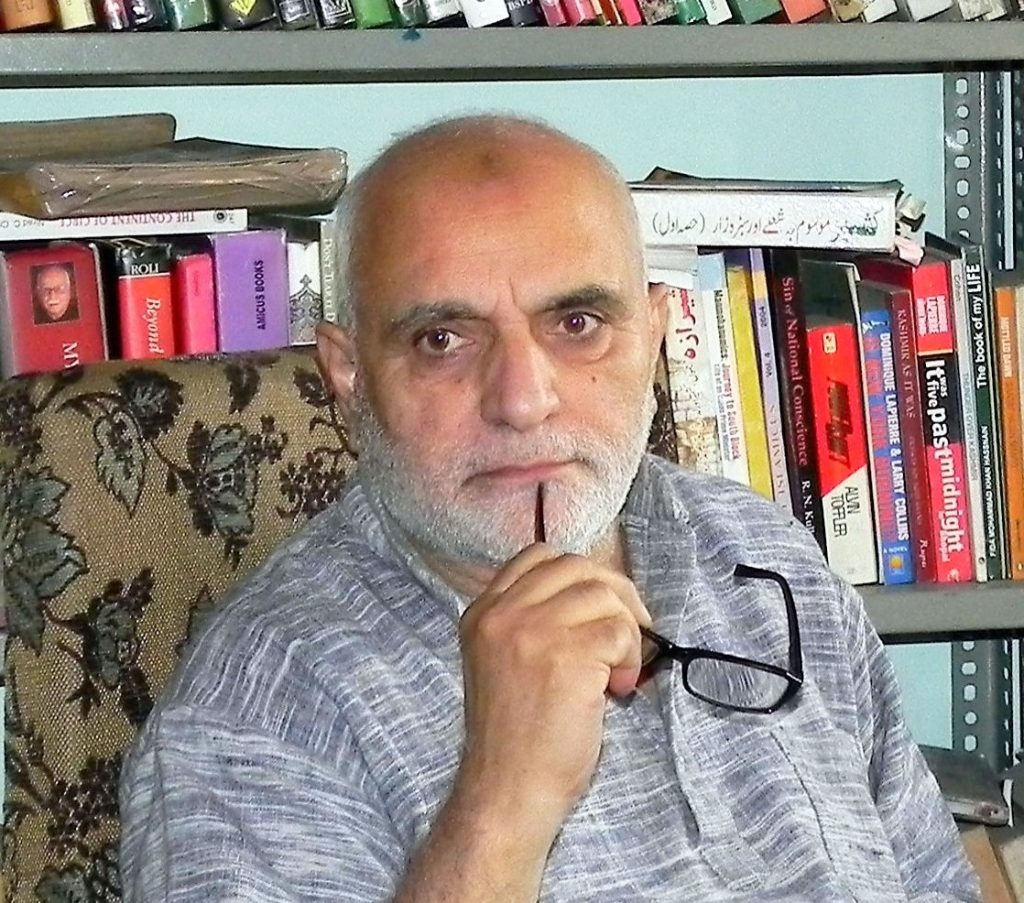Peace Watch » Editor's Take, Kashmir-Talk, Memeiors » Our Childhood Spiritual Odysseys
Our Childhood Spiritual Odysseys

Nostalgia
Growing up amongst Friars
By

Z G Muhammad
There was something beautiful- something extraordinary about our city. It is incomprehensible. At least, I have not understood it. Something has been about it that had made hundreds of Saints, Sages and Sufis converging on it, making it a permanent abode and ultimately the final resting place- the shrines. The lofty minarets and spires of these shrines, centuries after continue to wrap up the city I was born in and brought up in a mosaic of mystiques. Hymns in praise of Almighty Allah and pierced the eerie morning silence. These Astana and Khanaqahs cascading with spirituality resound with tributes for the last messenger of Allah by great Persian poets.
I am proud of being born in this city. I am proud of sharing my spiritual ancestry with Sarafi, Ghani and Khaki- great men of devotion and learning. Many times, when I look back, a sense of delight fills my heart and reminds me of my playful days in the compounds of these Astanas, jostling and pushing my friends on the stairs leading to the shrine perched on the mount Koh-I-Maran.
Hundreds of mendicants, wearing long cloaks on their bare bodies touching their ankles, some in multi-coloured- patch-pherans and some in rags came to these shrines from far and distant places, and stayed for days in around our Mohalla. Sometimes, my younger sibling Hassan, my peers Bashir, Deena and Ayub and I were unwittingly and instinctively baptized in spirituality even while playing hopscotch and tip-cat outside or on the lawns of these Astanas and hospices. My peers and I might have squatted hundreds of times along mendicants and beggars on the smoothly chiselled limestone pavements of the hospice in our Mohalla built in the name of great fourteenth-century saint Hazrat Baha–U-Din Naqshband Bukhari born in the village of Qasri-I-Arfan near Bukhari in Uzbekistan. And savoured sipping cinnamon-kahawa laced with parrot green cardamom from terracotta cups- some painted in gaudy colours and some rough and drab. There were many stories about eating in terracotta bowls and drinking tea in ceramic cups- All saints, including Sheikh-ul-Alam, we believed drank from clay cups. Hundreds of times, I might have joined the crowds of beggars, passersby and devotees with extended ‘moon of my palms’ for receiving taharee turmeric-boiled-rice, and machama, Candy-yellow-rice. It was out of great devotion and faith that children sat along with the beggars and mendicants on the bare floor of the shrines for sipping the green tea and relished the handful of candy-yellow-rice. It was in our social ethos not to call a beggar a beggar but treat him with respect and call him a Musafir- (traveller).
I remember, we children of the natives who carried no airs about our lineage were taught to respect the municipal worker Habib Sheikh who cleaned drains and swept lanes of our Mohalla as good as our teachers. They were doing a great job of keeping the city clean, we were told. “Hold in high esteem mendicants, beggars, needy and have-nots”, this line was religiously drilled in our mind by elders at home. My uncle often told me that you do not know if the man in rags squatting on the bare floor of the Astana was a divine soul or a Dervish or a Qalandar. To impress upon children respecting the ‘hewers of wood and drawers of water,’ he often quoted one or other line from Allama Muhammad Iqbal like:
Nigah-e-faqr main shaan-e-sikandari kya hai?
Khiraaj ki jo gada ho, wo qaiseri kya hai?
(What is worth of a kingdom in the eyes of a saint?
Such a rule in which the ruler is always worried about keeping it secure is worthless 😉
Indeed, many pious commoners with a healing touch that I love calling as the ‘ordinary legendry’ embellished the landscape of the city. I remember one Muhammad Shaban Sheikh- a shoemaker popularly named Shaban Sahib with sparkling sunken eyes in wee morning hours much before sun rays glided spires of Masjids and Astana’s swept the lawns of the Astana of Naqshband Sahib. He did the job out of devotion, not for any material gains. Many times I spotted him squatting on the lawns of the shrine under the canopy of any of the five majestic Chinars his head dipped inside his long “pheran“. During winters, he would be sitting in the hallway of the hospice in deep meditation. He stayed at the shrine till sun brightened the tops of Chinars.
His shop was not that far away from the shrine. It was just five to six hundred yards from our Mohalla in next Mohalla. On his shop, he would often be seen busy in making leather shoes and mending shoes and sandals. A couple of young cobblers also worked in his small shop. The shoemakers’ tools pincers, an assortment of awls, heel removers and Turkish hammers were dexterously fitted on walls with leather strips. The three-pronged anvils- that were distinctive in cobblers’ shops on a low height wooden stool. I often spotted Shaban Sahib fully engrossed making and mending shoes. People often visited him on his shop for seeking his blessings and requested him for Dua. He accepted no money, gifts or offerings. On many occasion, I saw him whispering something in the ears of men seeking his blessings. And people mostly departed from his shop satisfied. My friends and I all respected him and believed that he was a divine man above worldly considerations.
Unlike other Dervishes that I had seen in taqis– hashish parlours in our localities neither listened to music nor smoked hashish. I do not know if he followed Naqshbandi silsila .…
Shaban Sahib, the cobbler for his spiritual attainment powers was no ordinary mortal. our city has lost all its spiritual ambience, and we have become hollow men as the poet says, “headpieces filled with straw.”
Filed under: Editor's Take, Kashmir-Talk, Memeiors · Tags: Downtown Boy, Nostalgia ZGM, Spirtual Kashmir







